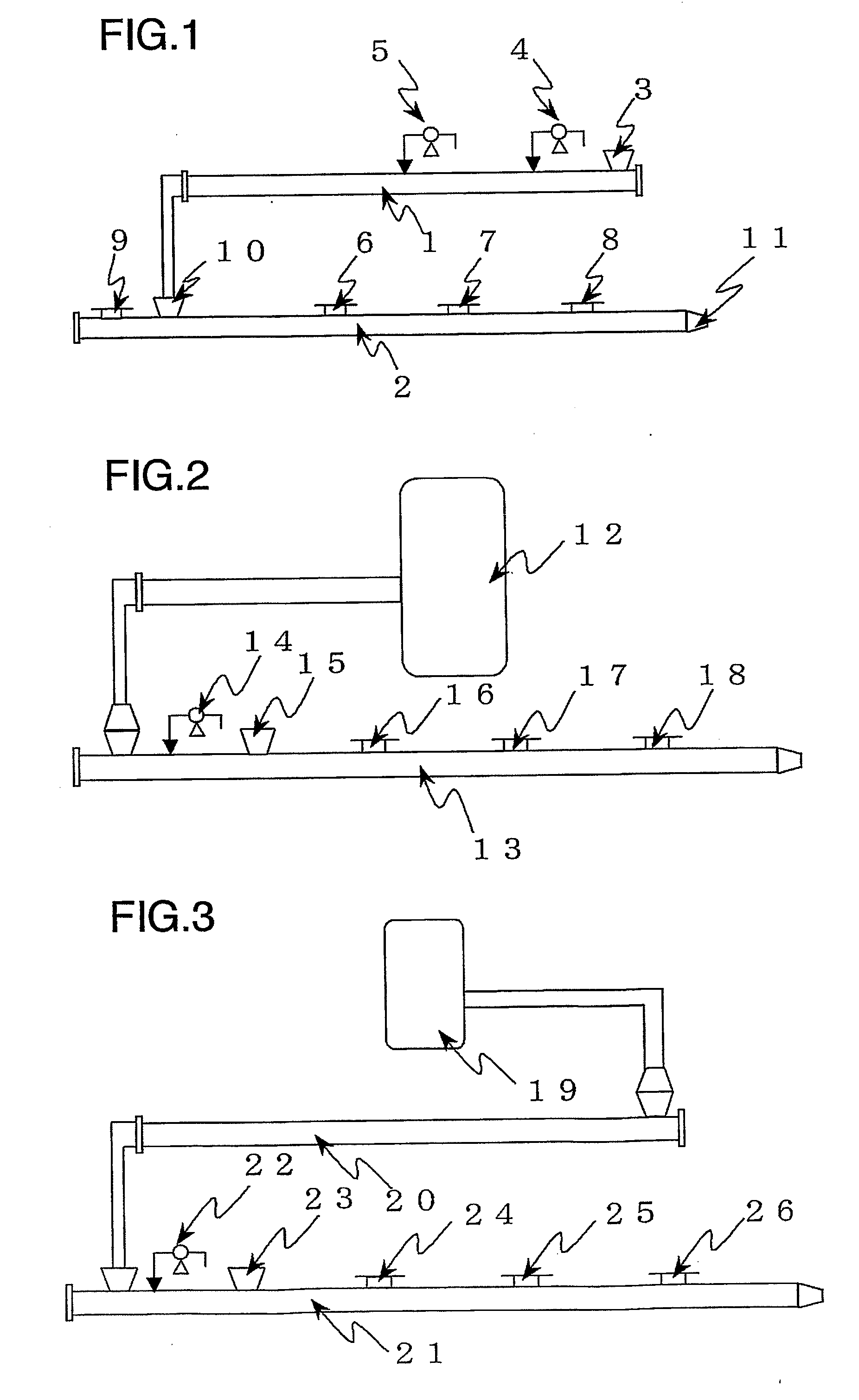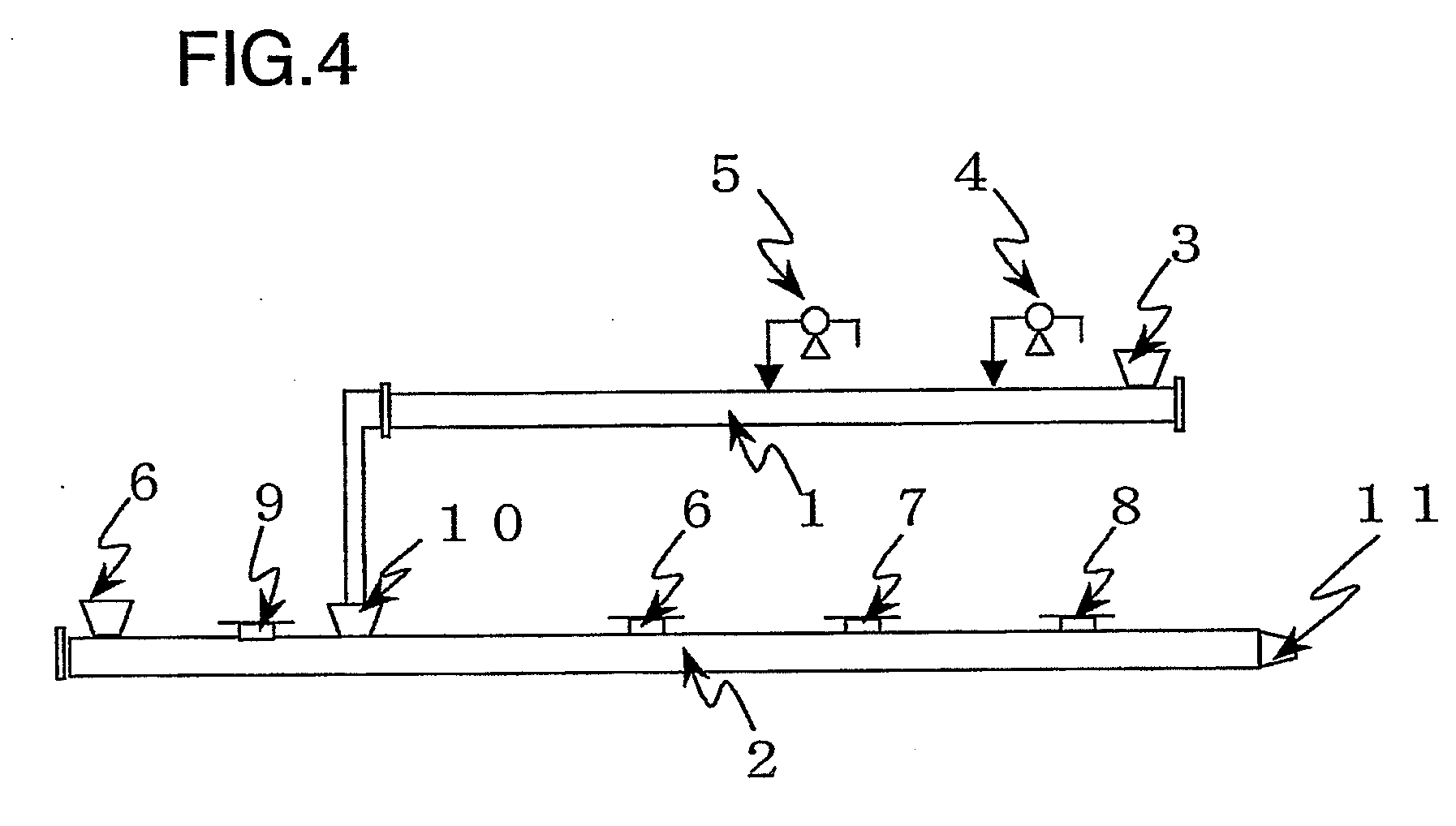Method for producing olefinic thermoplastic elastomer
- Summary
- Abstract
- Description
- Claims
- Application Information
AI Technical Summary
Benefits of technology
Problems solved by technology
Method used
Image
Examples
example 1
[0072]EPDM-1 and PP-1 were continuously supplied using a metered feeder respectively from a supply port (3) of the first extruder (1) at a supply rate of 20 kg / hr for the EPDM-1 and 8.6 kg / hr for the PP-1. Further, the mixed solvent was continuously supplied from a supply pump (4) on the first extruder at a supply rate of 4 kg / hr. The screw rotation speed of the first extruder (1) was set at 50 rpm, and the cylinder temperature was set at 130° C. At the first extruder (1), the EPDM-1, PP-1 and mixed solvent were mixed and continuously supplied to the second extruder (2) via a supply port (10). The screw rotation speed of the second extruder (2) was set at 300 rpm, and the cylinder temperature was set at 180° C. At the second extruder (2), the mixed solvent was removed from vent (6), vent (7), vent (8) and vent (9) while the EPDM-1, PP-1 and mixed solvent were kneaded. The kneaded product was cut by a pelletizer which was also provided in the second extruder to thereby obtain pellet-...
example 2
[0073]The same procedures were conducted as in Example 1, except that the supply rate of the mixed solvent was changed to 3 kg / hr. The results are shown in Table 1.
example 3
[0074]The same procedures were conducted as in Example 1, except that the supply rate of PP-1 was changed to 2.2 kg / hr. The results are shown in Table 1.
PUM
| Property | Measurement | Unit |
|---|---|---|
| Percent by mass | aaaaa | aaaaa |
| Percent by mass | aaaaa | aaaaa |
| Percent by mass | aaaaa | aaaaa |
Abstract
Description
Claims
Application Information
 Login to View More
Login to View More - R&D
- Intellectual Property
- Life Sciences
- Materials
- Tech Scout
- Unparalleled Data Quality
- Higher Quality Content
- 60% Fewer Hallucinations
Browse by: Latest US Patents, China's latest patents, Technical Efficacy Thesaurus, Application Domain, Technology Topic, Popular Technical Reports.
© 2025 PatSnap. All rights reserved.Legal|Privacy policy|Modern Slavery Act Transparency Statement|Sitemap|About US| Contact US: help@patsnap.com


